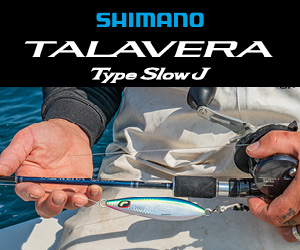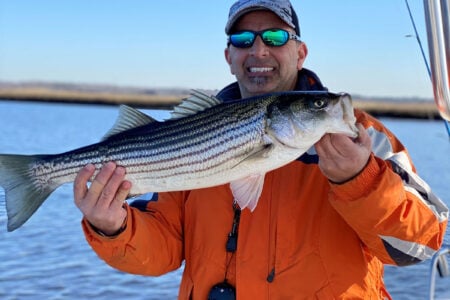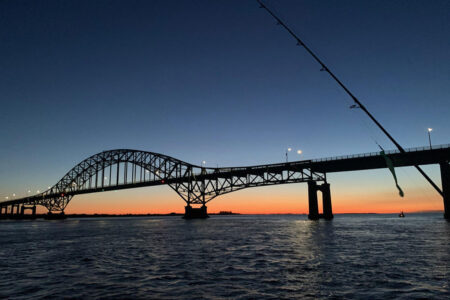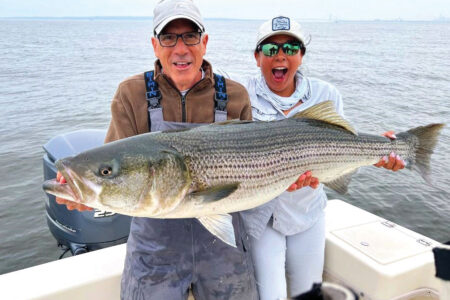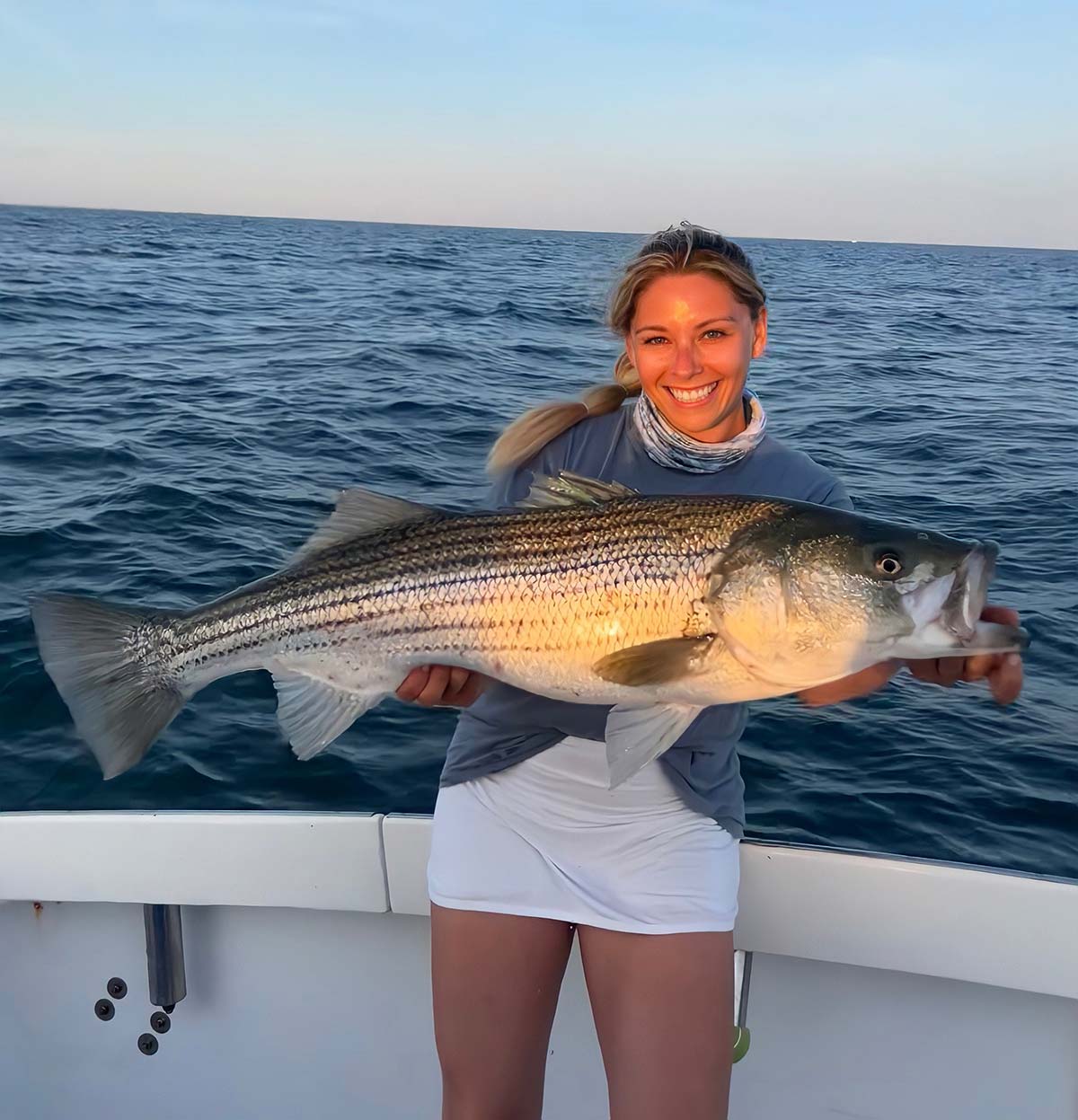
When trying to tempt summer stripers, there ain’t nothing like the real thing, baby.
Some fish memories are hard to beat, even if it’s not your “PB”. The people you’re with, the energy you’re around and the way you catch the fish can create an everlasting memory…
It was mid-July, four years ago, one of those hot summer days that even being out on the water offered no relief from the scorching heat. The only time we felt anything the resembled a summer breeze was steaming between spots. Our crew for the day consisted of three regulars that have been chartering our boat for the last 12 years. We caught plenty of nice stripers on the troll and anchored up for some sea bass and striper fishing like we always do. We’ll bottom fish for sea bass and set a few rods out to chunk for stripers at the same time.
The bite was slow with a few 30-inch stripers here and there. I remember getting frustrated, looking for that bigger fish to cap off the trip. I was constantly working the baits, letting them drift back and resetting every 15 minutes. I’ve noticed the stripers are most likely to hit just minutes after they’re set out and the baits are slowly drifting back. After a couple hours, my dad gave the “five minute warning” letting us know we would be picking up soon and heading back to the barn.
I started packing up the sea bass rods and cleaning up the deck. I always leave one striper rod out until the very last second, just in case. I had my Daiwa BG 5K sitting on the port side as I scrubbed the blood off the bait table. Then my dad called out, “Okay, let’s get the anchor!” Just as I was about to walk over to pull in that last rod and put it away, it folded over into a horseshoe. Line started to peel off the reel, the rod pumping.
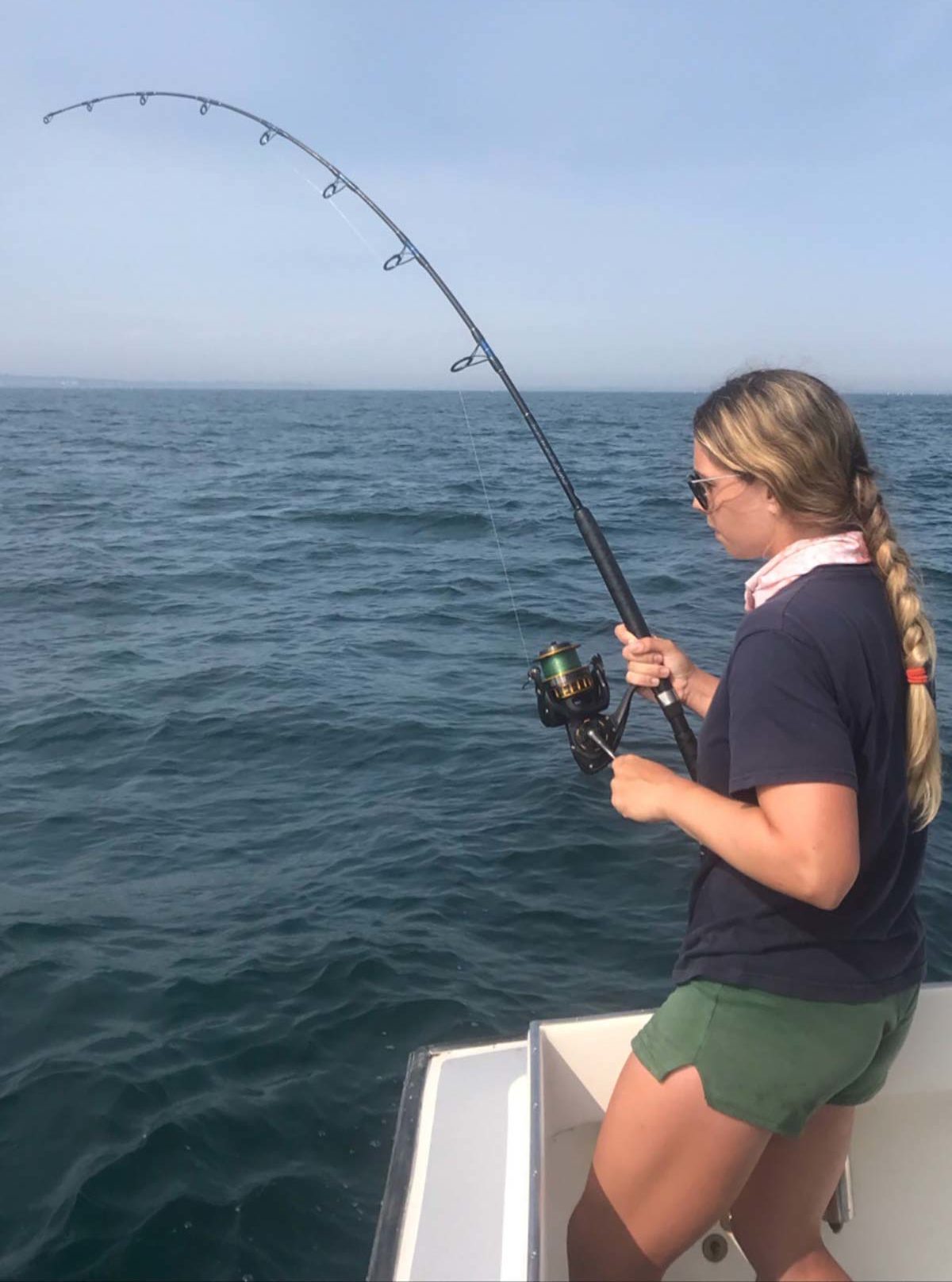
That’s Your Fish!
I yell at Alan (one of the charter guests), “go grab that rod!” He refuses and says, “That’s your fish! You’ve been working the rods all afternoon.” I didn’t hesitate, I ran over and picked it up. The fish took me around the boat to the starboard side. We’re in about 60 feet of water and the fish took me deep, every time I gained, it would just take it back out. That’s the fun of chunking in deep water, the fish have lots of oxygen and they’re strong. As Alan and crew cheered me on, Santana’s “No One to Depend On” played in the background from the stereo. Now every time I hear that song I think of this fish, it’s funny how certain songs can spark a memory.
Finally, we could see color and my dad grabbed the net. The fish hit the deck and high fives and fist pumps fill the cockpit. It was the biggest fish of the day and at the time, my biggest striper caught while chunking. It measured 44 inches and was estimated to be close to 40 pounds. In the striper world this isn’t a giant by any means but it was definitely a good fish. This took place before the slot limit and I knew my guests could still legally take one more fish if they wanted. I asked if they wanted to keep it, but deep down I hoped they’d say, no. Alan responded with something along the lines of, “This is your fish, if you want to release it that’s fine with us.”
I quickly grabbed my tags from Gray FishTag Research and added a little piece of green jewelry behind her dorsal fin. I got on the swim platform and revived her for a couple minutes before she slapped my hand away with her broom tail and swam back into the depths. Another round of high-fives and we headed back to the dock, smiling the whole way. It was a memory that has stayed with me ever since and the fish that really got me hooked on chunking.
Since then, I’ve worked to perfect my technique and landed fish up to 45 pounds, I’ve definitely lost a few giants along the way, too. It’s rewarding to see charter guests hooked up on lighter tackle rather than the big bulky trolling rods. It always puts a smile on their face to be able to feel the true power these big stripers really have. It’s a whole different feel. Prior to the charter business, my dad’s personal best was caught chunking from the beach in Charlestown, RI where he landed what he calls “the perfect fish”. It measured 55 inches and weighed 55 pounds, the fish that got him hooked.
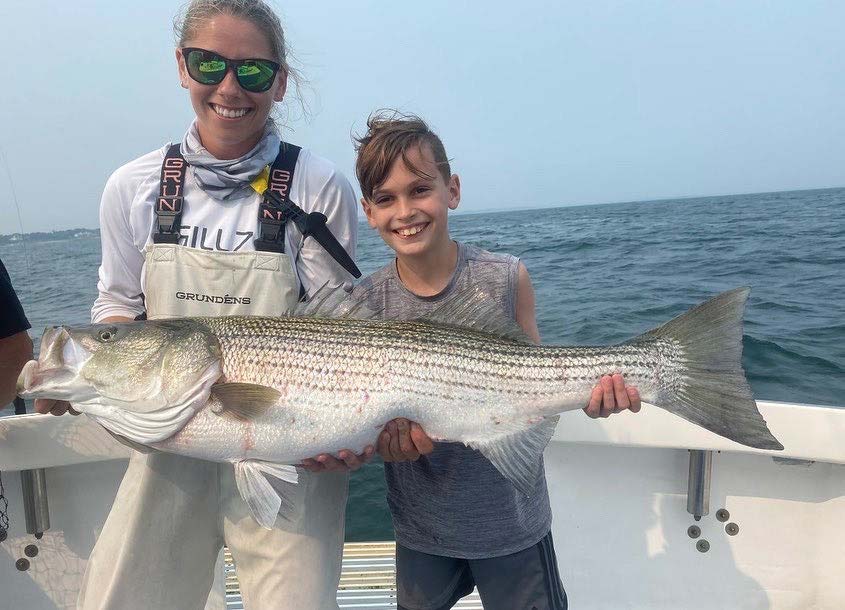
Good Bottom
When picking a good spot to anchor on it’s important to take notes on where you’ve previously caught fish. Fish aren’t everywhere, they reside in places that hold life, whether that be sea bass, scup or another reliable bait source. I’ve also noticed big bass like to sit on kelp beds where they can ambush their prey. Targeting big bass is different than the targeting the smaller ones. It’s almost like they’re a different breed. When the baitfish aren’t abundant they often stay close to bottom just waiting for unsuspecting prey to swim by. The smaller fish dart around chasing bait while the bigger ones sit deep and just wait. You may have noticed when fishing around a blitz you’ll tend to get fish in the 25- to 30-inch range up top while the big marks sit below and can usually only be caught if you drop something below the school.
During the summer when the pogies have already rolled through, stripers take up residency in certain areas, you can almost guarantee they will be there every time. This holds true in the summer months off Newport. You’re not marking much then come to a spot where you find the fish reside and all of sudden the screen lights up. These are the spots to keep in mind when choosing a good chunking spot. It takes time to find a productive spot you can rely on but keeping notes on where you always see fish can be very helpful.
For example, my best chunking spot in Newport is a place we fish frequently. It’s a big pinnacle in the middle of nowhere that comes up to 30 feet, but just off the edge it drops to 70. It’s like a city in the middle of the desert. It consistently holds fish but if you’re not quite on it, it can sometimes be quiet. The flat desert-like sections are like a highway, you may mark fish but they’re just passing through. This is why when chunking it’s important to find the “city”.
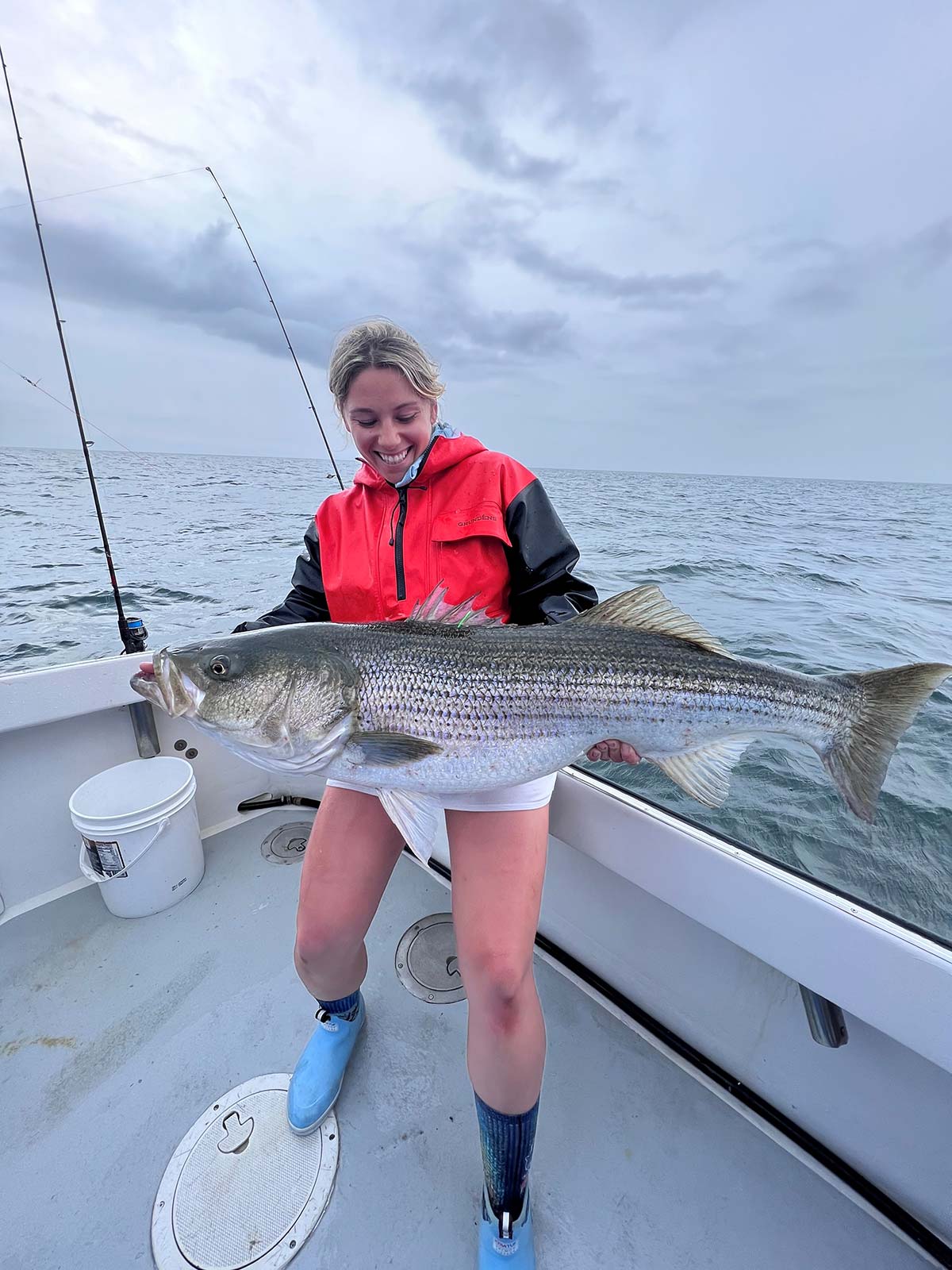
Prime Baits
Using fresh bait is another aspect that you don’t want to overlook. Some days it doesn’t seem like it, but stripers can be picky eaters. I personally like using fresh mackerel, they also freeze well and don’t turn into mush when thawed. Depending on how big the mackerel are, I cut the head off and usually get two or three nice chunks off the body but discard the tail. I like to cut it at an angle, I’ve noticed when I do that it spins a little when it floats back, giving it a nice flash. If using pogies, it’s important to always use fresh not frozen. They don’t freeze as well as the mackerel and you will notice a difference in the bite. When cutting up pogies, I cut the head off, and chunk 2 or 3 pieces from the body. Again, discarding the tail end. I’ve noticed you don’t need big pieces to catch big fish. The easier it is for the fish to eat, the more likely it is that you’ll get a good hook set.
However, sometimes I’ll use the head of the pogie, this can be excellent for those giant stripers with mouths the size of a basketball. I don’t think I’ve ever caught a fish under 38 inches when using the head. If you have frozen pogies they are good for just one thing, chum. Which brings me to another important aspect of chunking. Once I’ve found a good spot, I will chum with frozen pogies or sometimes the mackerel heads. Cutting them into small pieces. If you don’t mind getting your hands dirty, I often rip the pogies up with my hands, it’s a good way to get little pieces in the water to entice the fish. You’ll notice the fish come right up the boat gorging themselves on the chum that you just threw over. That’s a great time to stick a hook in a piece and let it float back with all the chum.
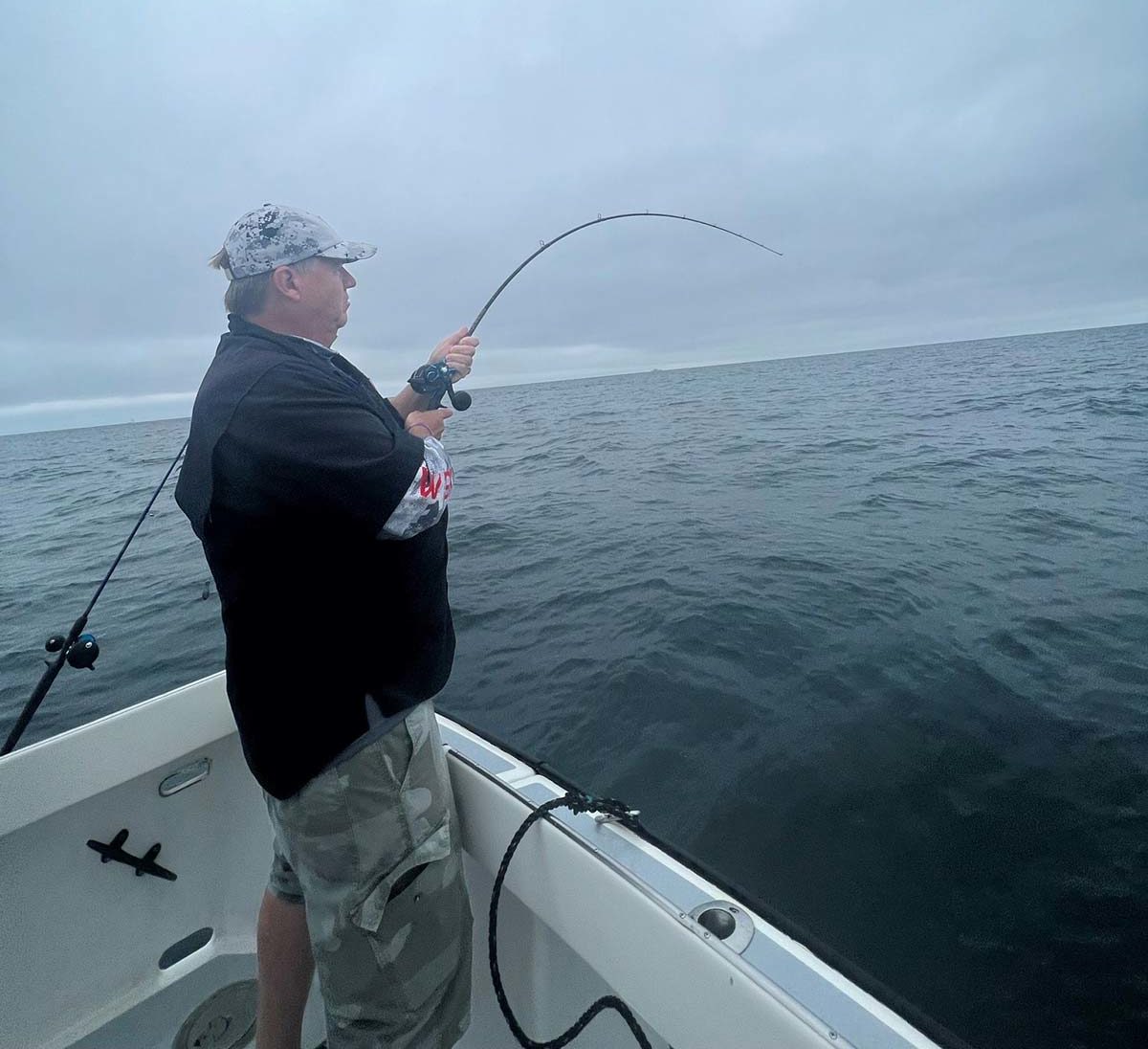
Gear & Tackle
Gear is a personal preference, sometimes I use conventional, while other times I’ll use a spinning set up. The only difference is when using a conventional, it’s easier to control your drift, so keep that in mind. Any 4K or 5K size spinning reel will do the trick with a medium to medium heavy 6-1/2 to 7-foot rod. I personally use the Daiwa Saltist MQ 4K spinning reel or a Daiwa Saltist 15H conventional. Both will work fine, it’s more dependent on what you feel more comfortable with. Other options include Shimano Saragossa 5K or a Tranx 300, among many others.
I use an 8/0 octopus circle hook when rigging bigger chunks like a pogie head. For smaller pieces such as mackerel I use 6/0 or 7/0 circle hooks. It’s important to rig the bait properly so the hook can pull through the flesh of the bait and into the jaw of the striper. Placing it about an inch deep and making sure the barb is exposed will increase your hook up ratio. Using weight is also dependent on the current, but from experience, no weight is best and, if you must add weight, use as little as the depth or tide will allow.
A good indicator if the current is strong is to look behind the boat once you’re anchored. If you see swirling eddies that’s a sign you may need to add some weight so your baits get down to the fish. If weight is necessary I will use something light such as a 1/8-ounce egg sinker and change the weight if necessary. Another good indicator that you need to add more weight is if your line is scoped out, but you also don’t want your line going straight down. This is when I play with the weights until I find the perfect mix. When adding weight, I rig the egg sinker on to the main line then add a swivel so the weight doesn’t slide down the leader, I’ll tie a snelled hook to that and I’m ready to go.
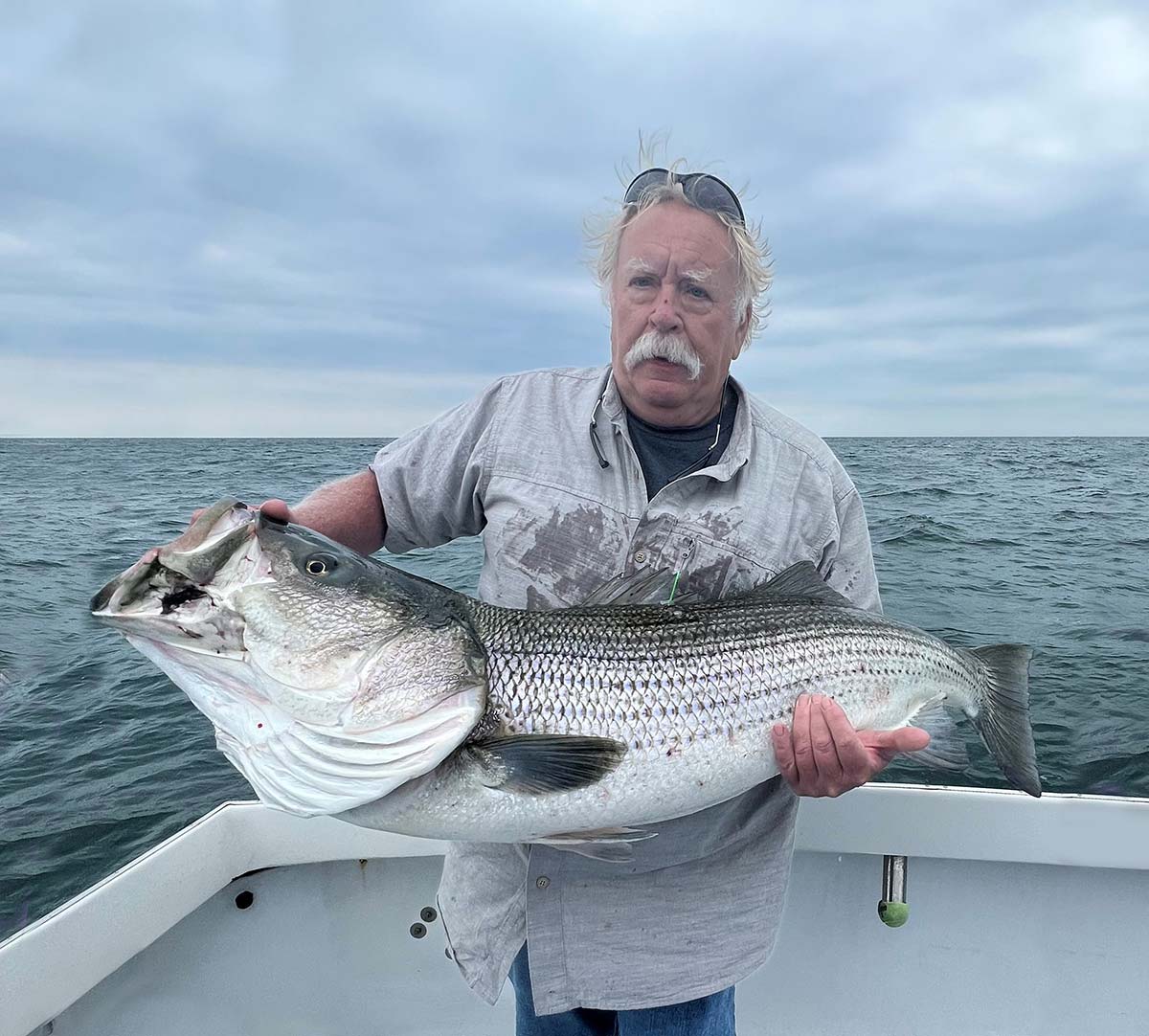
The Take
The take is the best part of chunking, most of the time I will hold the rod in my hand after I just tossed out a bait because this is the mostly likely time to get hit, as the bait falls back. The take feels like a slow, deliberate pull. I keep my tip high and allow the fish to pull the rod down to the water before setting the hook. If the fish is running especially hard, I’ll open the bail or disengage the reel and let the fish run for a few extra second before setting the hook. Of course, we’re fishing with circle hooks, so the set could be better described as tightening up on the fish and then reeling down on them, keeping the line tight, ensuring the hook is set into the striper’s jaw.
These days chunking is thought of as more of an old school method, with all the topwater and eel slinging madness, but it can be a very effective and fun way to target large summer striped bass. Your hands may smell like pogies or mackerel for a few days, but that’s nothing a little vinegar or lemon juice can’t fix! Prior to last season, I beat my PB striper twice while chunking and I’ve definitely lost a few heartbreakers that still haunt me to this day! That’s the art in chunking, or fishing in general, there’s always room for improvement or trying methods you haven’t tried. You never know, it may produce your fish of a lifetime and give you on heck of a fight in the process. It’s good to be humbled every now and then!
